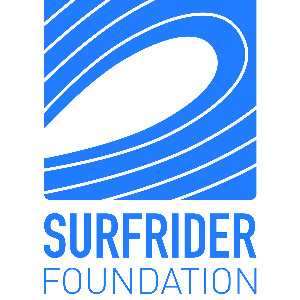San Onofre Nuclear Generating Station 2023
San Onofre Nuclear Power Plant Beach
Special Thanks To
San Onofre Nuclear Power Plant Beach
Please join us in our efforts to monitor the effluent being released from the San Onofre Nuclear Generating Station by collecting 6 MORE samples. See our initial results below!
The San Onofre Nuclear Generating Station (SONGS) is a coastal nuclear power plant that bifurcates one of California's most popular state parks. The nuclear plant also sits just 100 feet away from a world renowned surfing beach at San Onofre. Surfers and beachgoers are understandably concerned about the level of radiation in their local beach water. The Surfrider Foundation, a national 501(c)3 nonprofit organization that specializes in ocean protection, water quality and coastal preservation, hopes to raise funds to test the level of radioactive isotopes in the local surf break and at the plant's radioactive effluent discharge site (1.1 miles offshore).
Surfrider worked with state agencies to convince the plant majority owner and operator, Southern California Edison, to publicly notify the local community and beachgoers of planned batch releases of radioactive effluent. To date, SONGS is the only nuclear plant in the United States to give batch release notifications, posting details on the volume, radiation dose and time of release 48-hours in advance. This gives community scientists and organizations like Surfrider the rare opportunity to actually test the waterways before, during, and after a release to measure how nuclear effluent alters the local water quality. At this point, the levels reportedly released by San Onofre are extremely low and not considered a health threat (e.g. if you surfed San Onofre every day for 100 years, the estimated dose level would be less than that a single dental X-ray), yet these levels are self-tested and self-reported by Edison.
With San Onofre Nuclear's tainted history, from a 2012 radiation leak essentially resulting in the plant's initial shutdown, to federal penalties due to severe lack of oversight and safety precautions at the plant, the ability to have community scientists help track and measure radioactive effluent at their beloved beach and surfbreak would provide important information for beachgoers, and further contribute to ORO's important research and knowledge of radiation levels in our coastal marine environment.
Please donate to help support this important testing effort! All results will be made public on ORO's website (currently being updated!) and further contribute to our global knowledge about radiation in our ocean.
To learn more about Surfrider's effort to get nuclear waste off the California coastline and ways you can get involved, visit www.surfrider.org/campaigns/get-nuclear-waste-off-californias-coast. More information about sampling and collaborators from the Woods Hole Oceanographic Institution and their project Our Radioactive Ocean can be found at ourradioactiveocean.org.
Sampling Update!
A write up by Surfrider's Environmental Science and Policy Manager Katie Day will give you much more information linked HERE! But in brief our first two samples were taken on February 24th, 2021 at two locations near the San Onofre plant: where there is outfall and further out at the surf break. At the outfall site 3.4 Bq of cesium-137 per m3 of water was found, while the surf break showed 3.9 Bq/m3. No cesium 134 was observed. These values are consistent with numbers seen further north from samples taken in San Luis Obispo and Bodega Head, California and it is unclear if there is any cesium contribution from the San Onofre plants.
Levels prior to 2015 were generally below 2.0 Bq/m3 for cesium-137 however have increased since due to ocean currents bringing cesium from the Fukushima Dai-ichi Nuclear Power Plant in Japan following the tsunami that resulted in an explosion there in March 2011.
Subsequent sampling in April of 2022 also showed no cesium-134 and slightly lower levels of cesium-137. Fortunately after this sampling we do not seem to see an indication of much change during or post effluent release at the generating station, but continued monitoring is important and so we hope to repeat this sampling in 2023.




